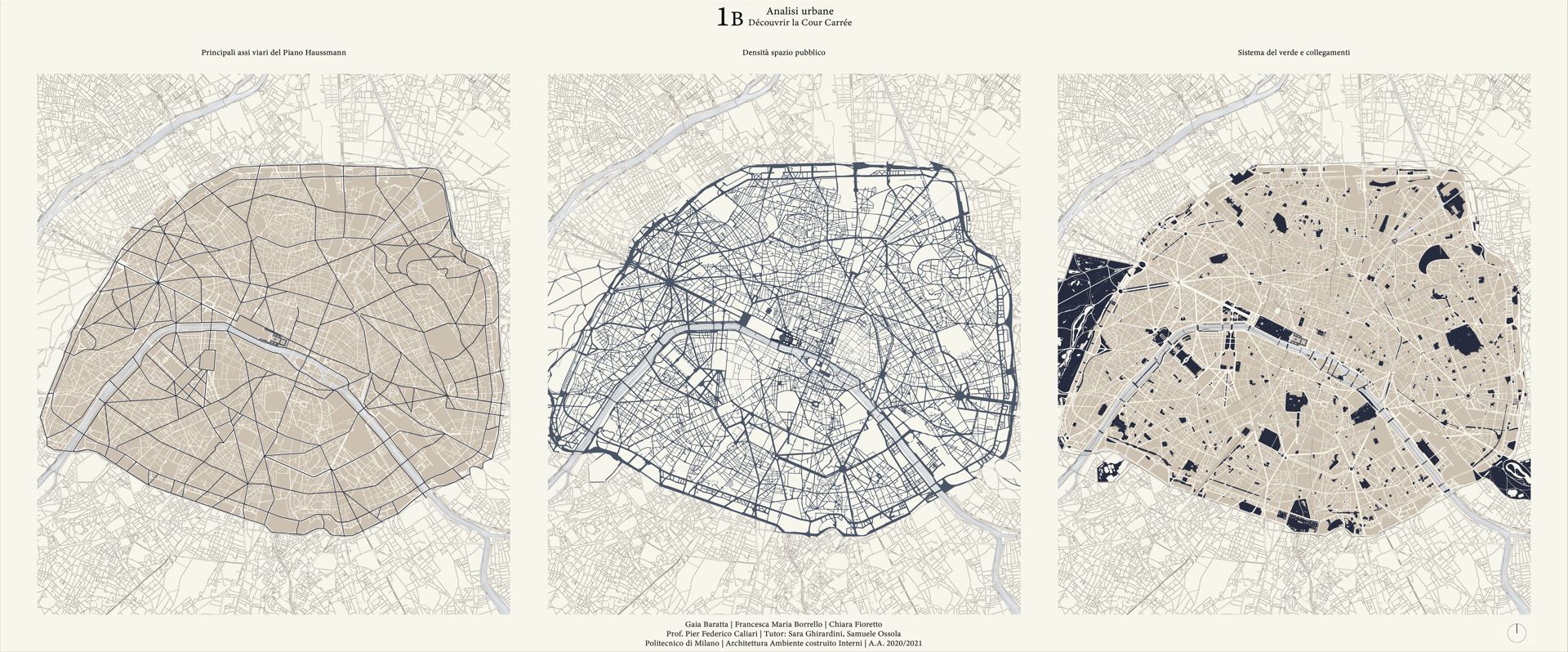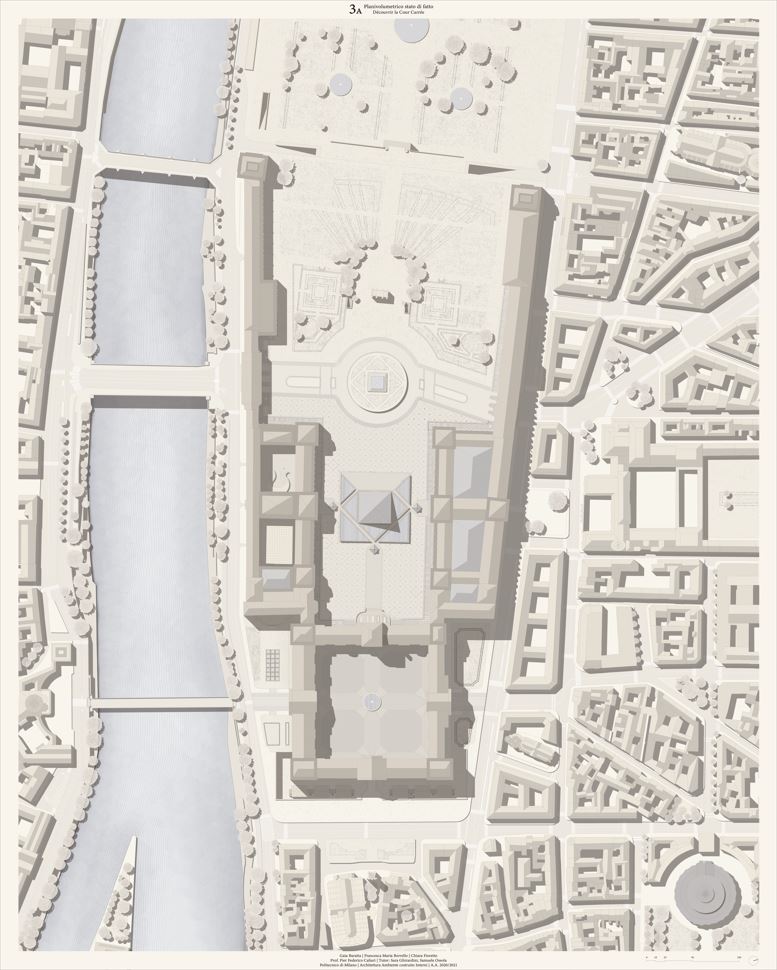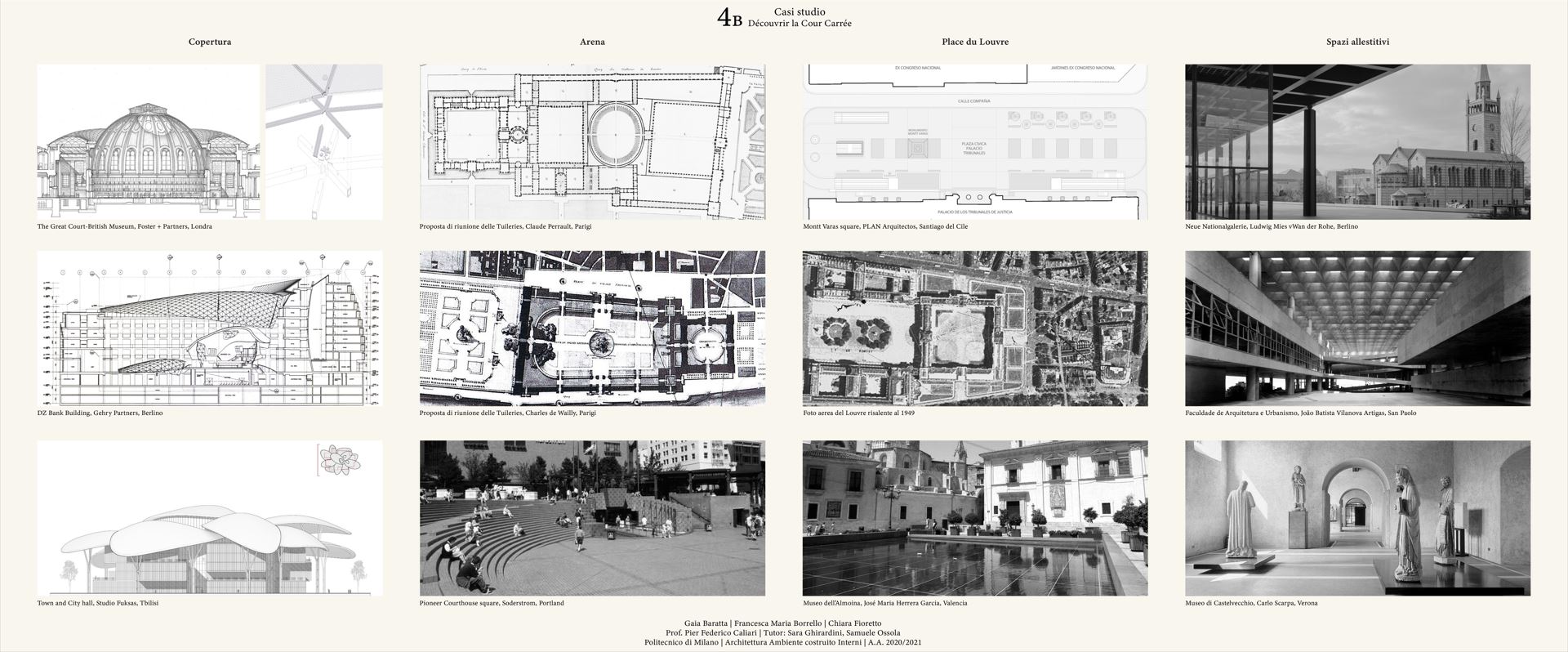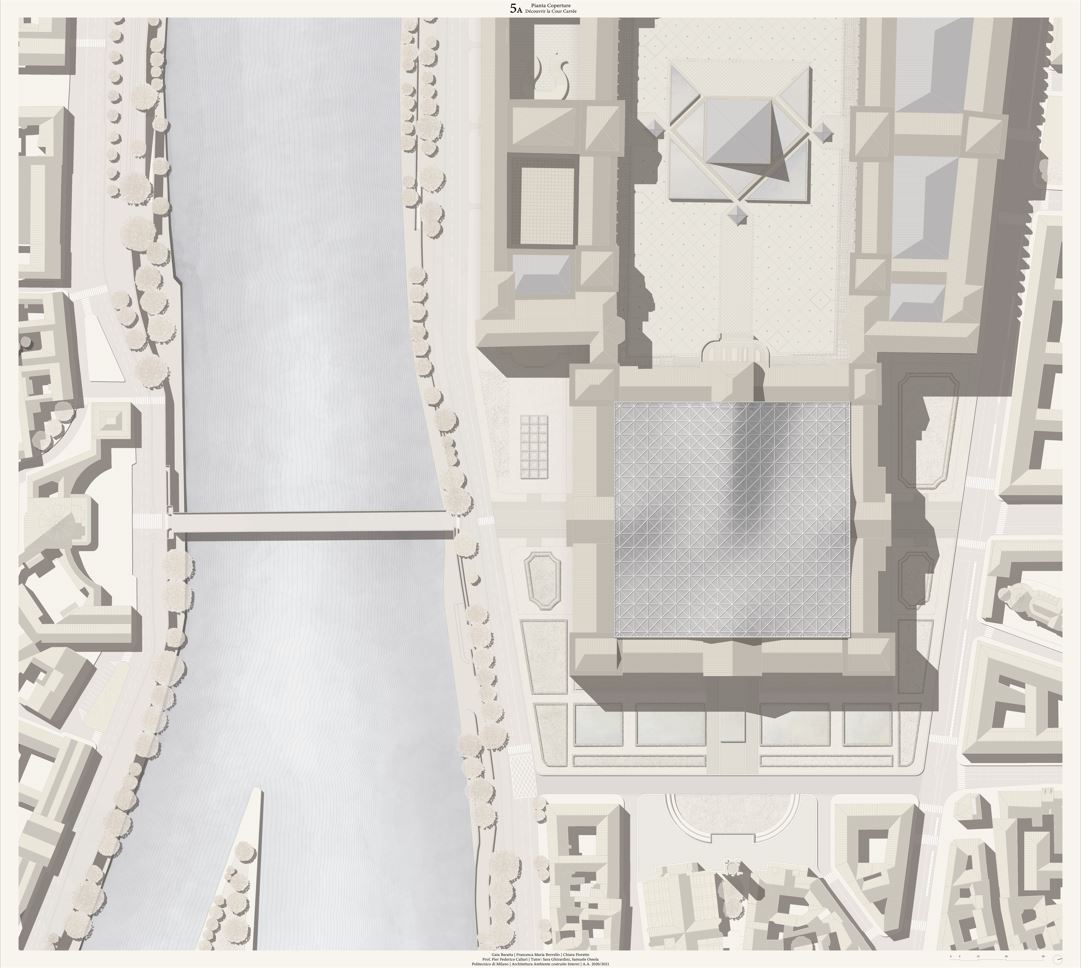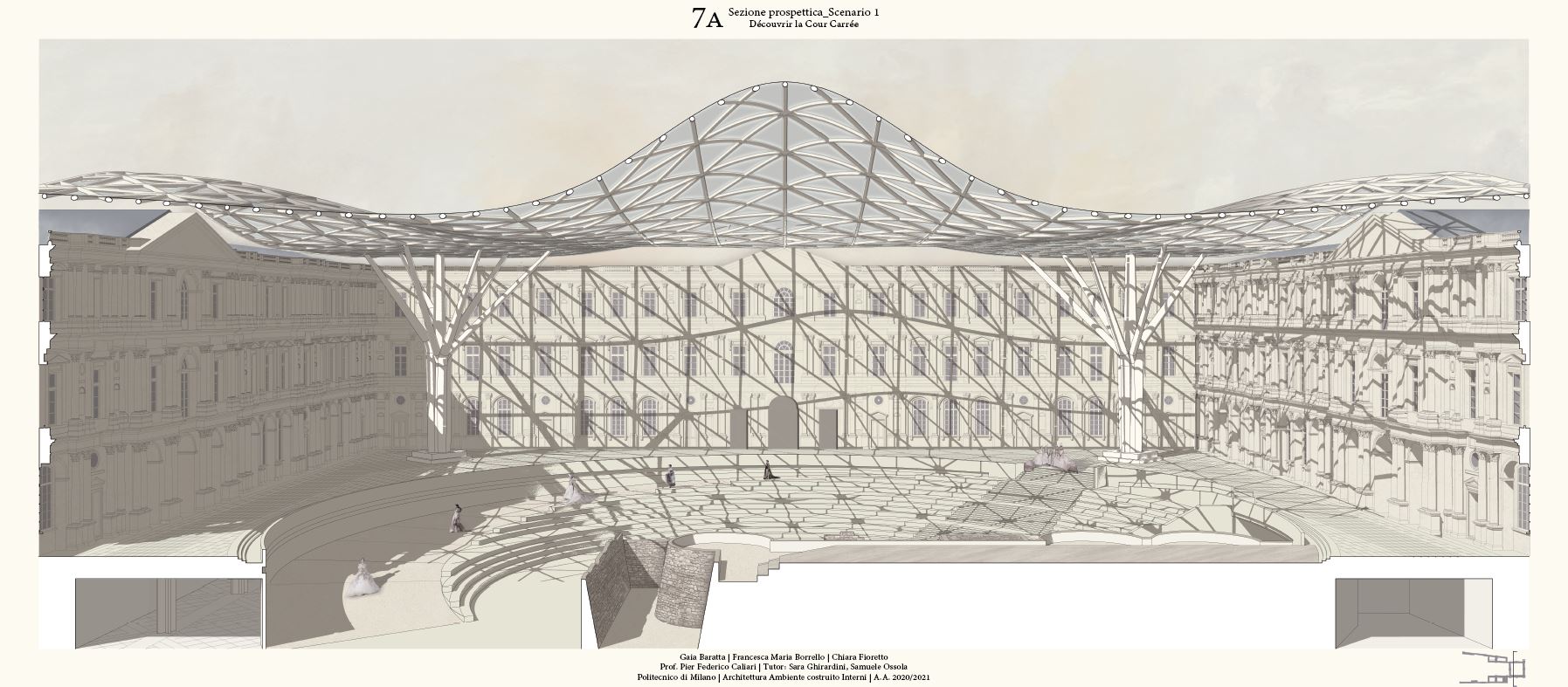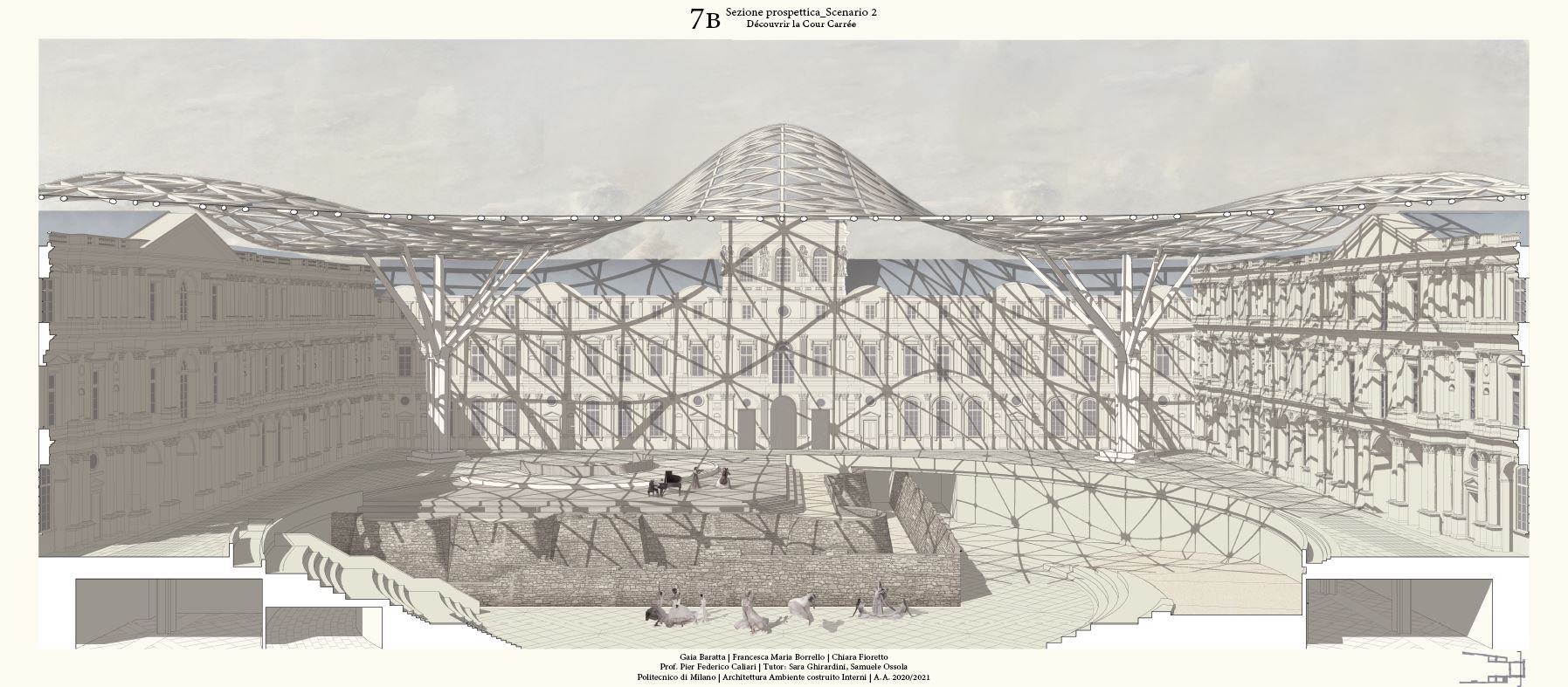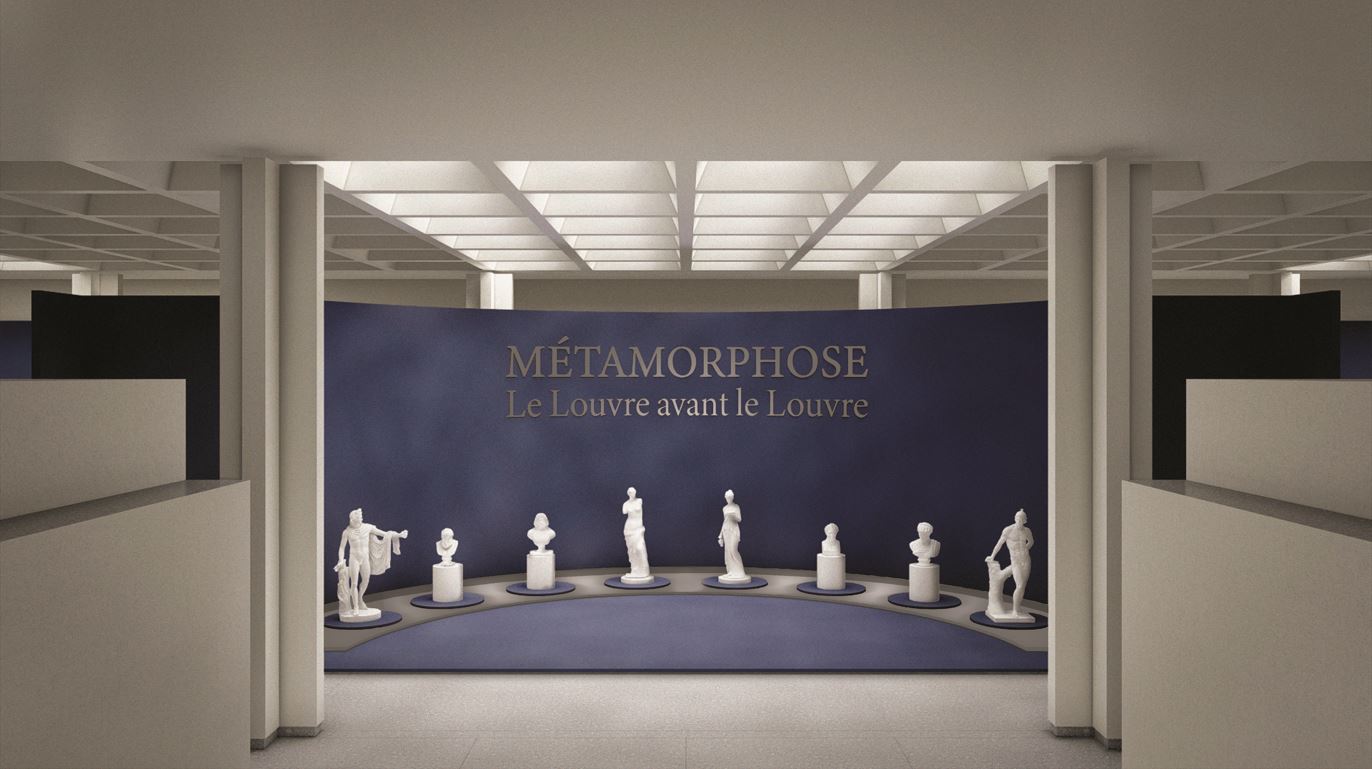Tesi di Laurea
Candidati
Gaia Baratta, Francesca Borrello,Chiara Fioretto
Relatore
Pier Federico Caliari
Correlatore
Sara Ghirardini, Samuele Ossola
Anno Accademaco
2020/2021
Il museo del Louvre di Parigi si presenta ai nostri occhi come un sontuoso complesso architettonico, visitato da milioni di persone che si recano per poter ammirare le numerose collezioni presenti al suo interno. Ma la sua storia è ben più complessa e la si può ritrovare vicino ai resti del primo Louvre, una fortezza medievale costruita dal re Filippo Augusto. La sua importanza e la sua posizione centrale all’interno della città lo hanno portato ad essere in costante evoluzione: da fortezza a palazzo reale, ogni re e sovrano ha visto concretizzato in esso il simbolo della propria egemonia; da palazzo reale a museo, la città ha affidato a questo luogo la rappresentanza della propria identità e cultura. Nell’ultimo secolo, il Louvre è diventato il museo per antonomasia e, di conseguenza, sono nate le prime criticità riguardanti l’ingente affluenza e la proprietà di una copiosa collezione. Ciò ha portato ad un ulteriore rinnovamento, con l’ampliamento degli spazi e degli ingressi da parte dell’architetto I. M. Pei. Il suo progetto aveva guardato alle corti come occasione di riconversione in spazi museali, poi seguito da quello di Mario Bellini e Rudy Ricciotti all’interno della Cour Visconti. La tesi si inserisce all’interno di questa nuova visione, considerando che occasioni di ampliamento del Louvre sono presenti già all’interno del Louvre stesso. Questa proposta si concentra nel cuore del museo, la Cour Carrée, diramandosi a Est verso la Place du Louvre e a Sud verso la Senna. La principale corte del Louvre, da luogo di passaggio, si trasforma in piazza pubblica che invita a scoprire gli spazi ipogei nelle ali che da essa si sviluppano..
The Louvre Museum in Paris presents itself to our eyes as a sumptuous architectural complex, visited by millions of people who come to admire the many collections inside. But its history is far more complex and can be found close to the remains of the first Louvre, a medieval fortress built by King Philippe Auguste. Its importance and its central position within the city have led it to be in constant evolution: from fortress to royal palace, every king and sovereign has seen in it the symbol of his hegemony; from royal palace to museum, the city has entrusted this place with the representation of its identity and culture. In the last century, the Louvre has become the museum par excellence and, as a result, the first critical issues arose concerning the large number of visitors and the ownership of a copious collection. This led to a further renovation, with the extension of the spaces and entrances by architect I. M. Pei. His project had looked at the courtyards as an opportunity for conversion into museum spaces, later followed by Mario Bellini and Rudy Ricciotti’s project in the Cour Visconti. The thesis fits within this new vision, considering that opportunities for extension are already present within the Louvre itself. This proposal focuses on the heart of the museum, the Cour Carrée, branching off to the east towards the Place du Louvre and south towards the Seine. The Louvre’s main courtyard, from a place of passage, is transformed into a public square inviting visitors to discover the underground spaces in the wings that develop from it.



